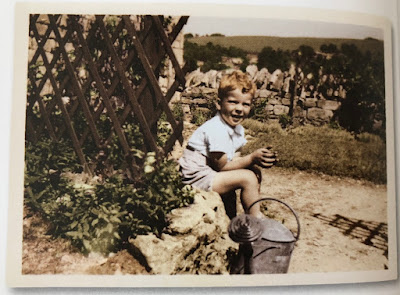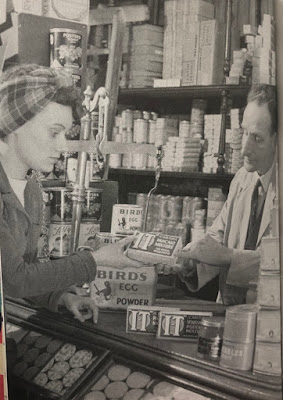Recipes of War: Part 1
"Is it Available?"
The recipes in the Ministry of Food leaflets readily
included food substitutes. It was the ministry’s
job to devise recipes that could make-up for the lack of certain food favourites
amongst the population. The Imperial War Museum’s book Victory in the Kitchen: Wartime Recipes, showcases some of these
recipes, taken straight from their archives. Many of these curious recipes are “mock”
recipes including: ‘Mock Haggis’ using oatmeal and bacon ends (31) and ‘Mock
Cream’ using household milk and sugar (67). This introduces the Ministry’s effort to imitate
much loved recipes at a time when certain ingredients were unattainable. The
leaflets also appear to advocate eggless recipes such as: ‘Eggless Fruit Cake’
on page 73. Moreover, honey, marmalade and syrups are implemented as a
supplement for sugar. The recipe for Meat Curry is a good example of this:
‘1
tablespoon chutney or vinegar,
1
tablespoon marmalade,
1 teaspoon
black treacle or syrup’ (37).
The
sustainability of food was key to survival and is prevalent in the recipes. There
is a constant use of scraps and leftovers such as: ‘Scrap Bread Pudding’ which
consists of ‘stale bread soaked in cold water' (63). Meat was also becoming a
luxury for the population, all parts of the animal were utilised in dishes, taking
the kitchen back to Victorian methods of cooking: ‘adopt this method for
cooking tripe, brisket, ox cheek’, clod, lamb’s tails and other cheap parts of
the meat’ (36)- no part is left to waste. When meat was no longer an option vegetarian
meals became the alternative, vegetables were implemented in traditionally meat
based dishes. On page
45, the ‘Lord Woolton Pie’ is
introduced. This was a pastry dish, that consisted of a variety of vegetables
and was a common dish served throughout Britain during the war period, when
meat based dishes became hard to prepare and other ingredients was difficult to
come by. The dish was names after Lord Woolton who devised this recipe after becoming
the Minster of Food in 1940.
The specificity of the ingredient measurements, highlight the need to control portions based on the limited supply of ingredients: ‘1 small onion, 1 medium sized apple, 1 ½ oz dripping, 3/4 – 1lb beef or lamb, 1 ½ tablespoons curry powder, 4 tablespoons flour, ¼ teaspoon dry mustard, ¾ pint stock or water, 1 teaspoon sugar, 1 tablespoon chutney or vinegar, 1 tablespoon marmalade, 1 teaspoon black treacle or syrup, 2 teaspoons salt’ (37). Rationing meant, amounts of food were monitored and families and households were restricted to a specific quantity of food. This specificity of the measurements, limit the amount of ingredients used in order to be sufficient.
Works Cited:
Museum, Imperial War. Victory in the Kitchen: Wartime Recipes. London: IWM, 2016. Print.
Images Cited:
Fig 1: Knight, Katherine. Rationing in the Second World War: Spuds, Spam and Eating for Victory. Gloucestershire: The History Press, 2011. Print.



Comments
Post a Comment